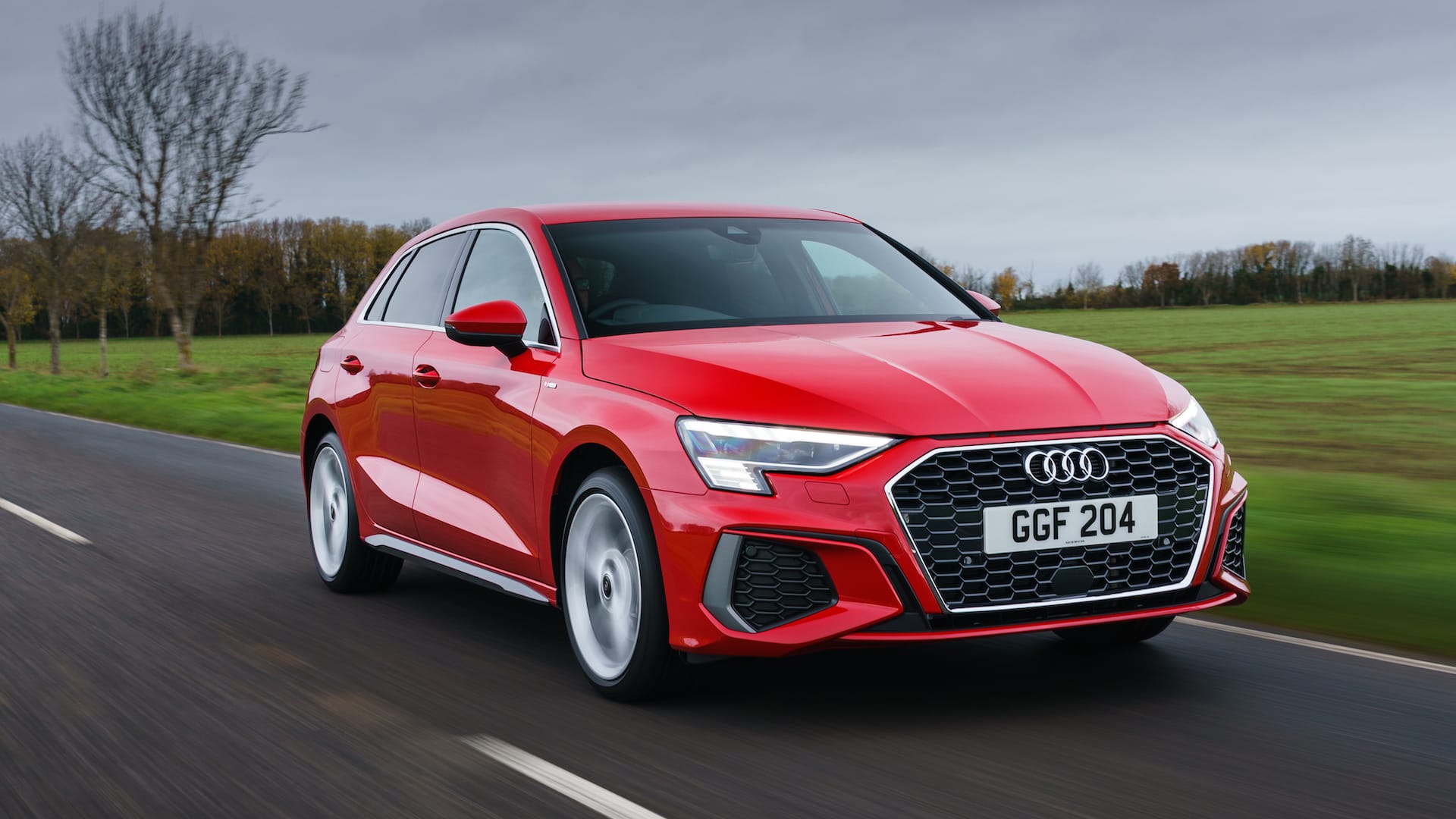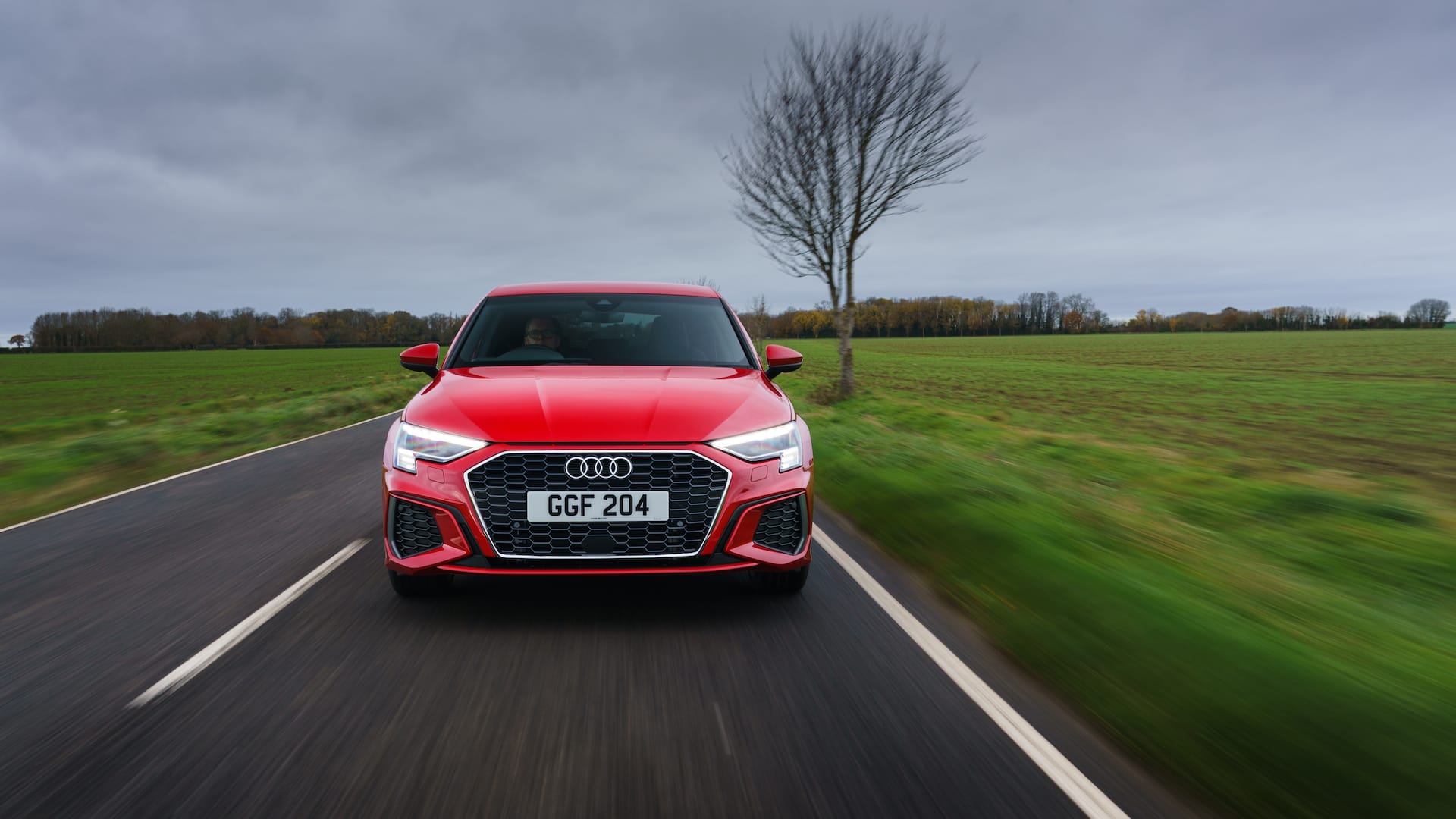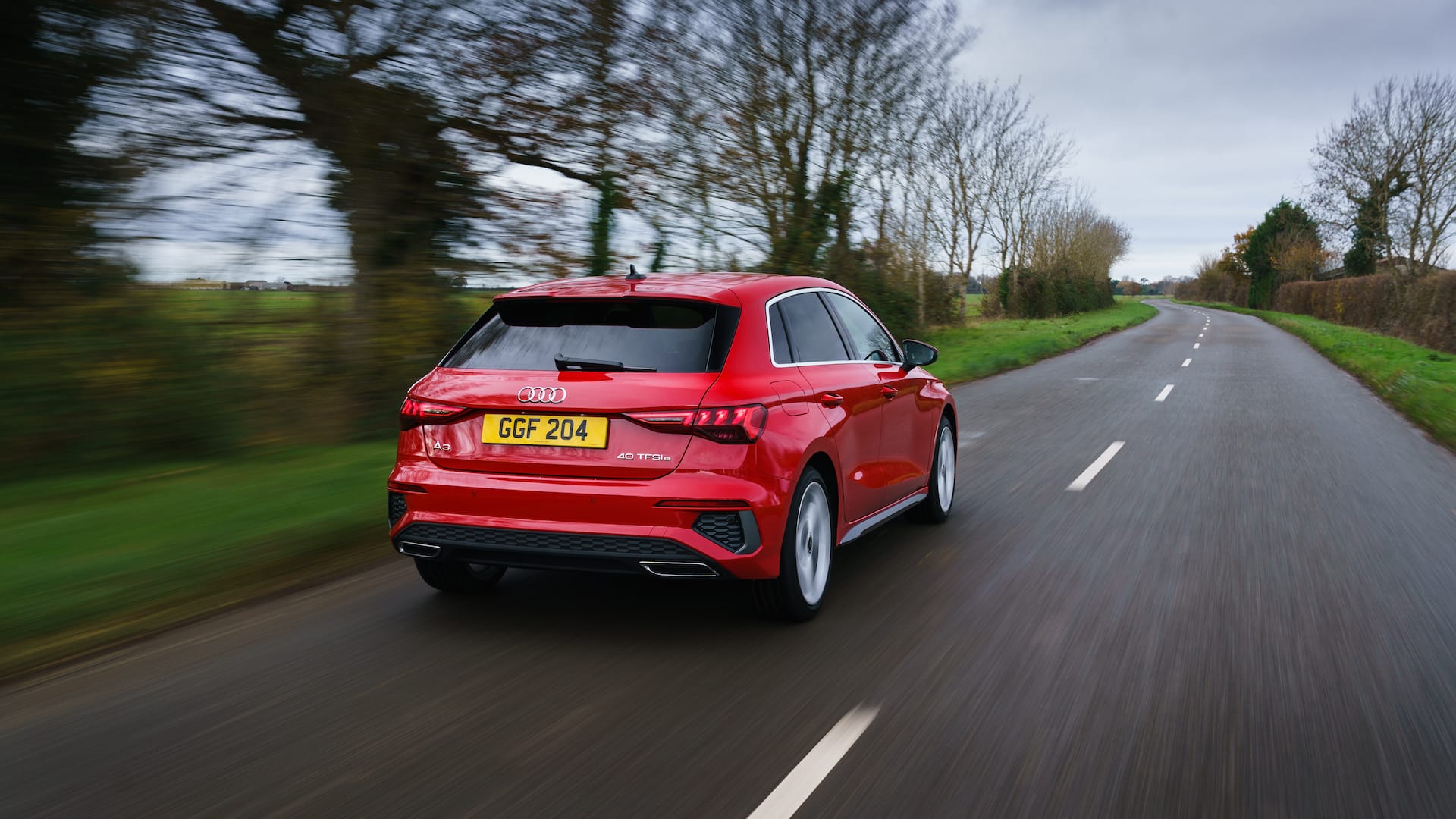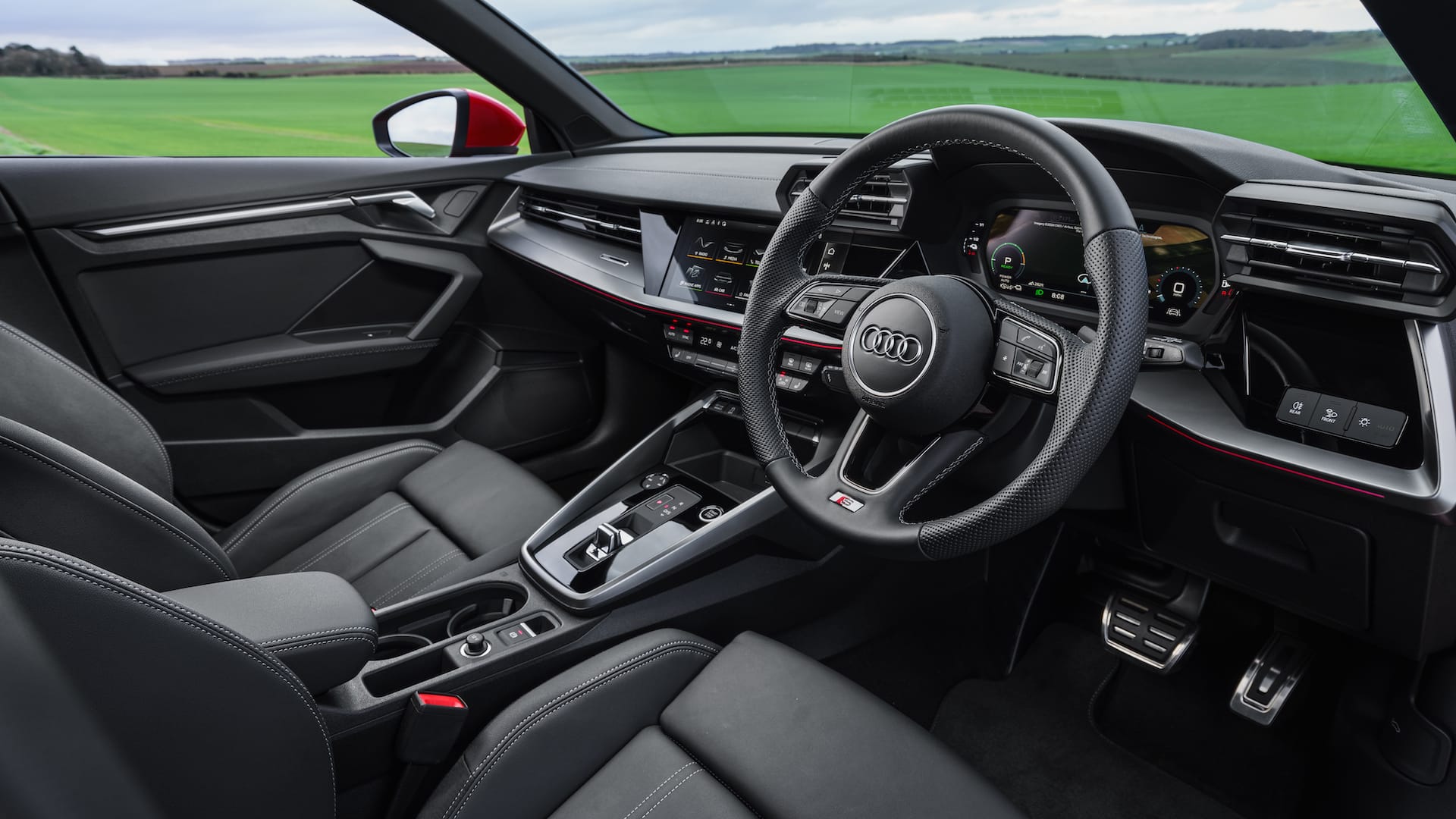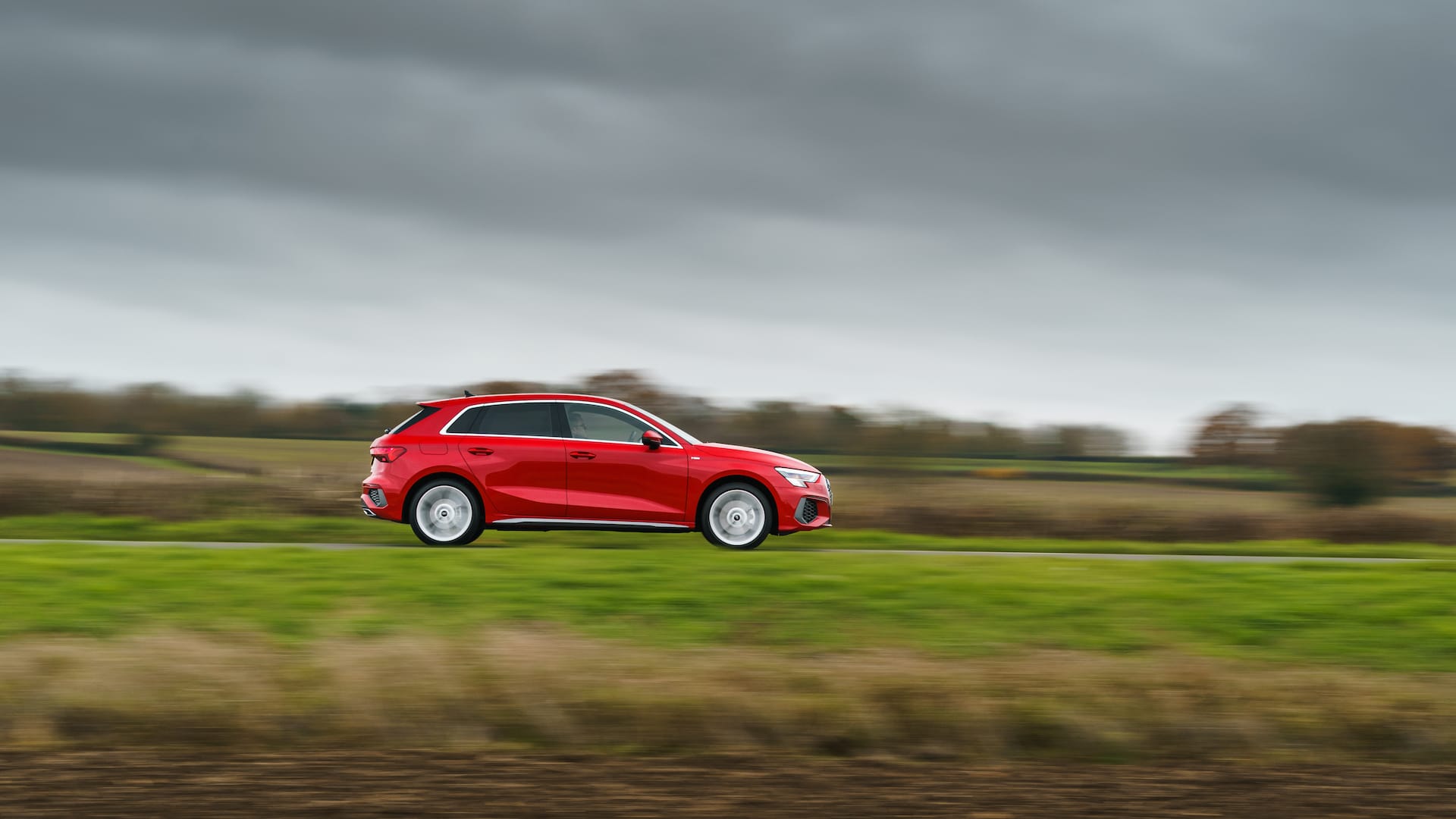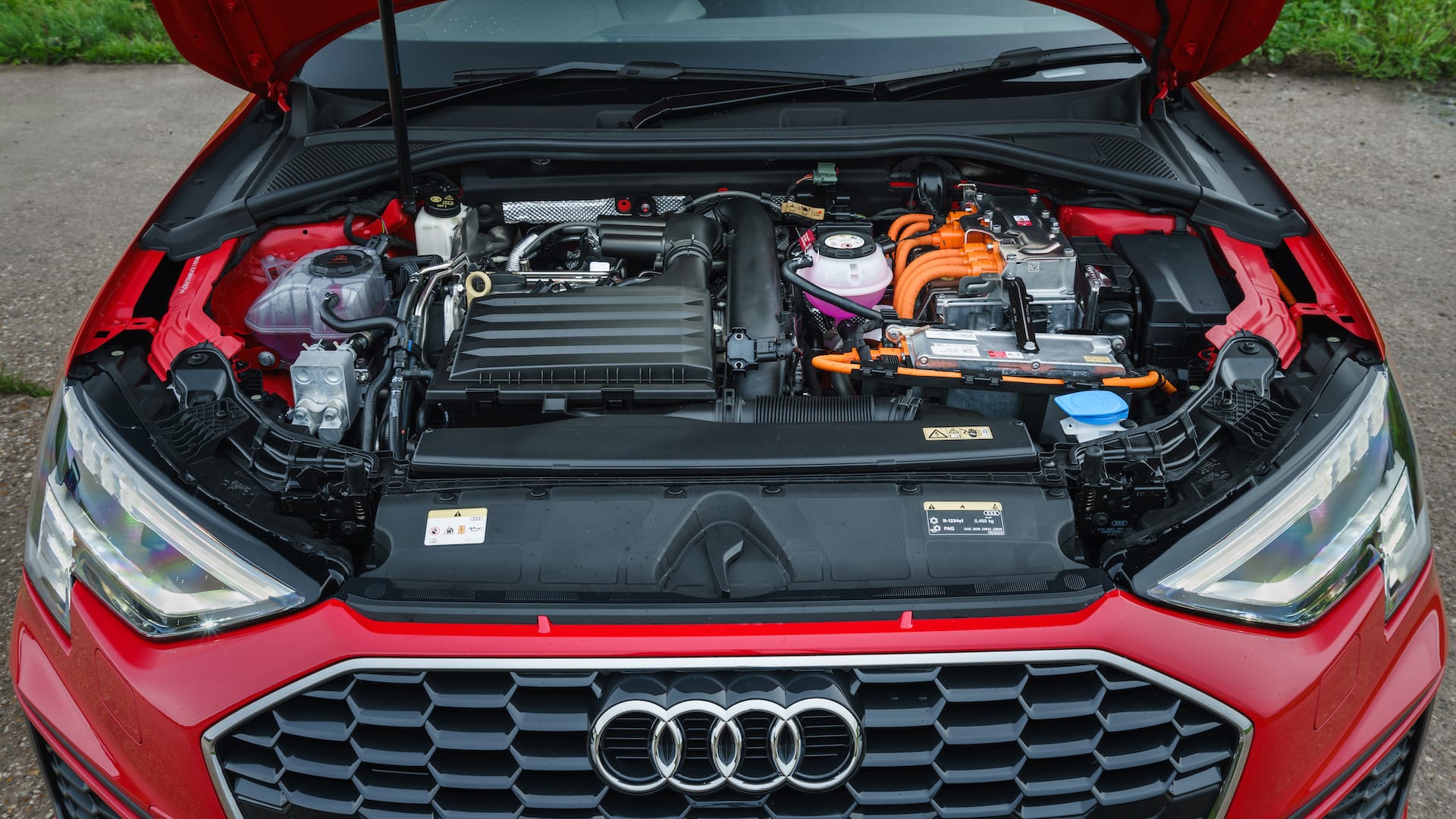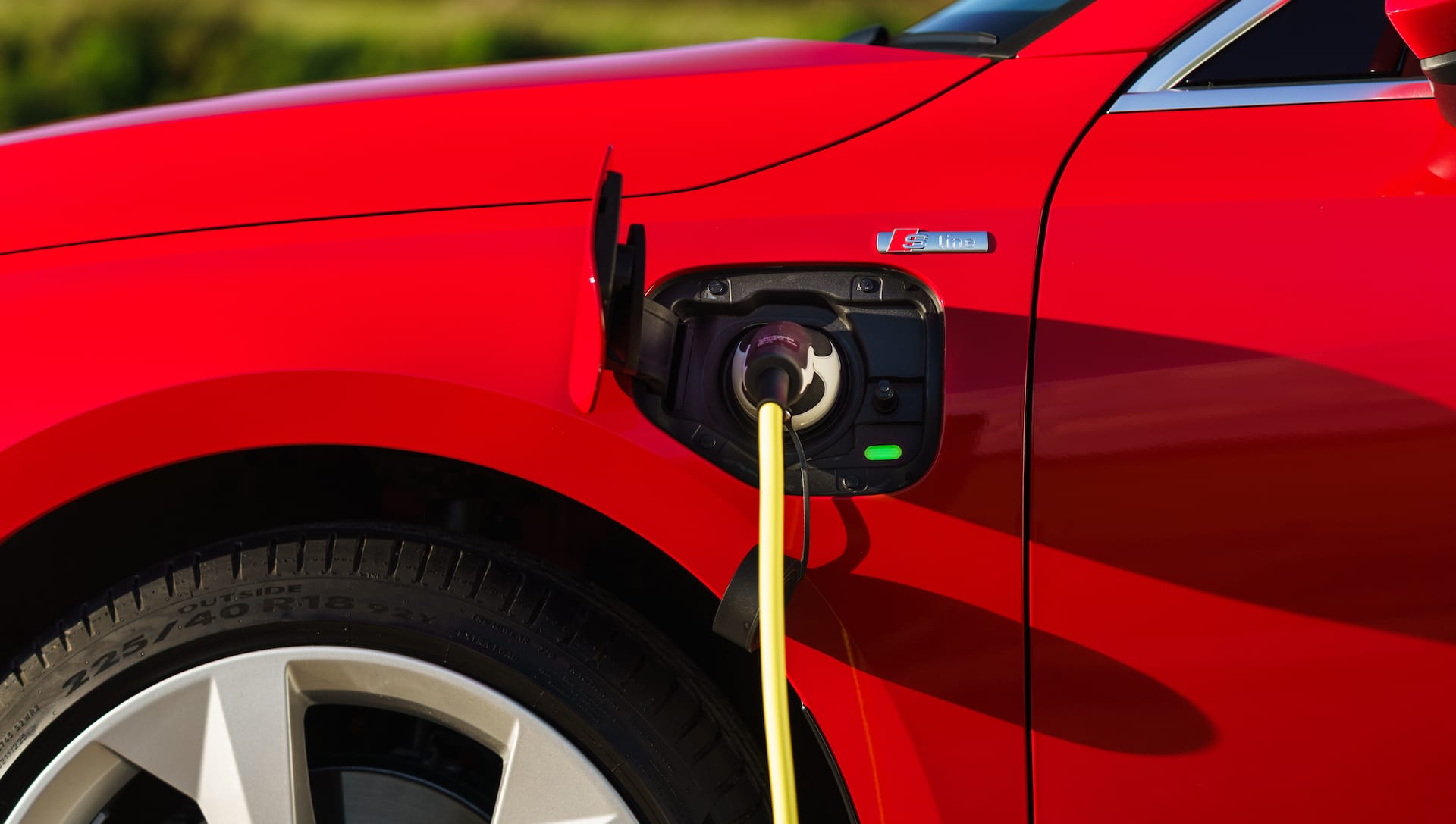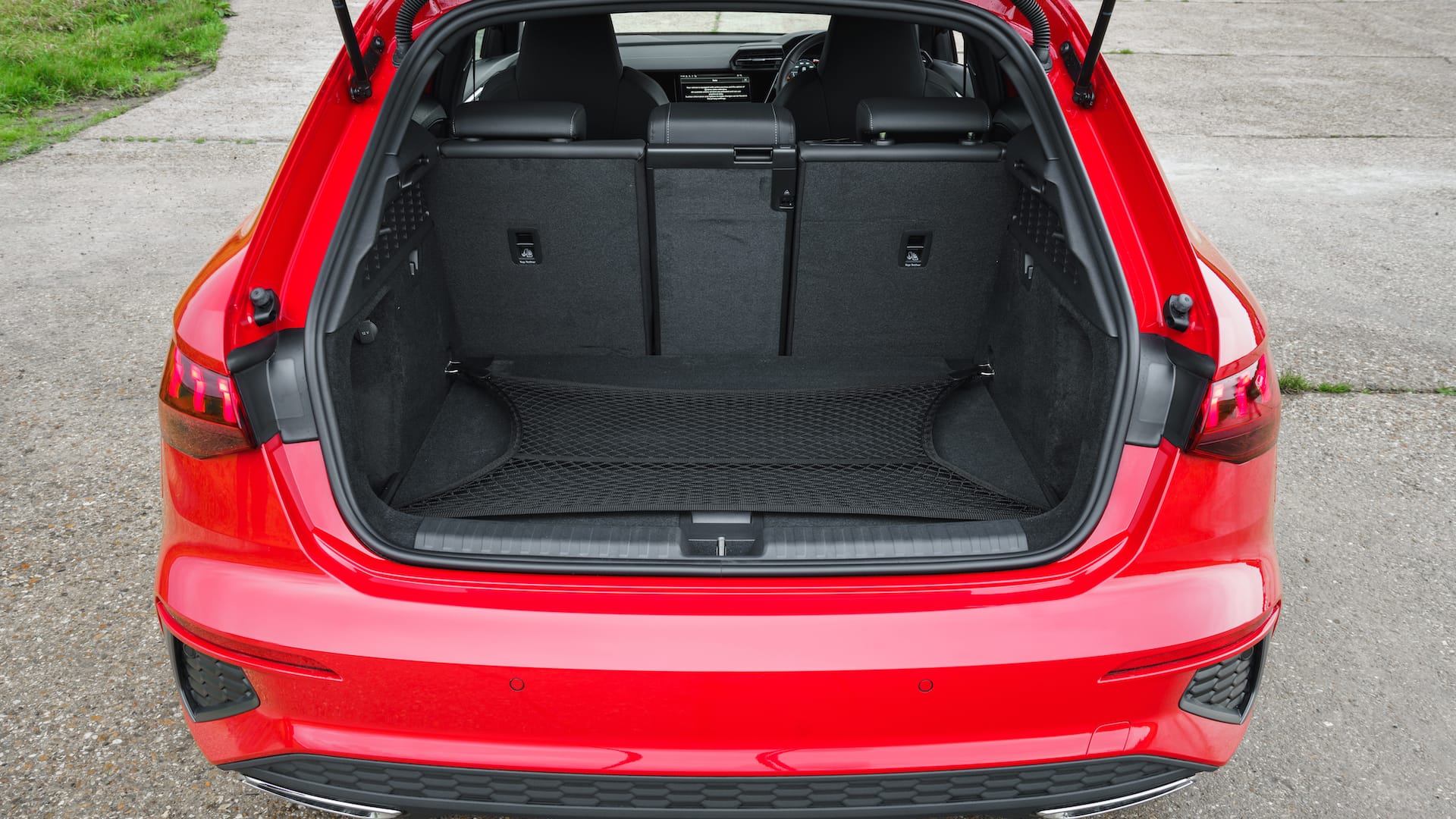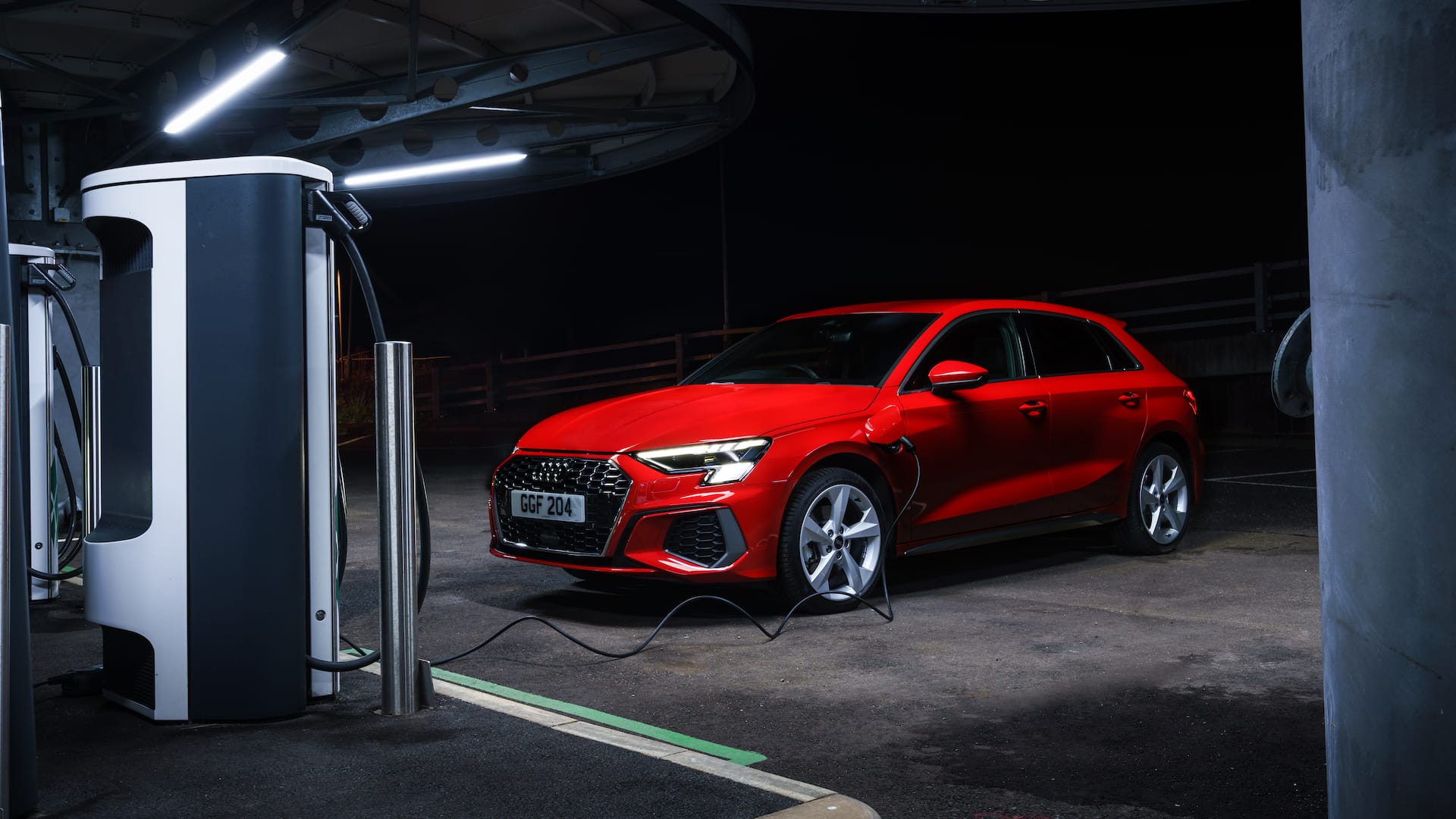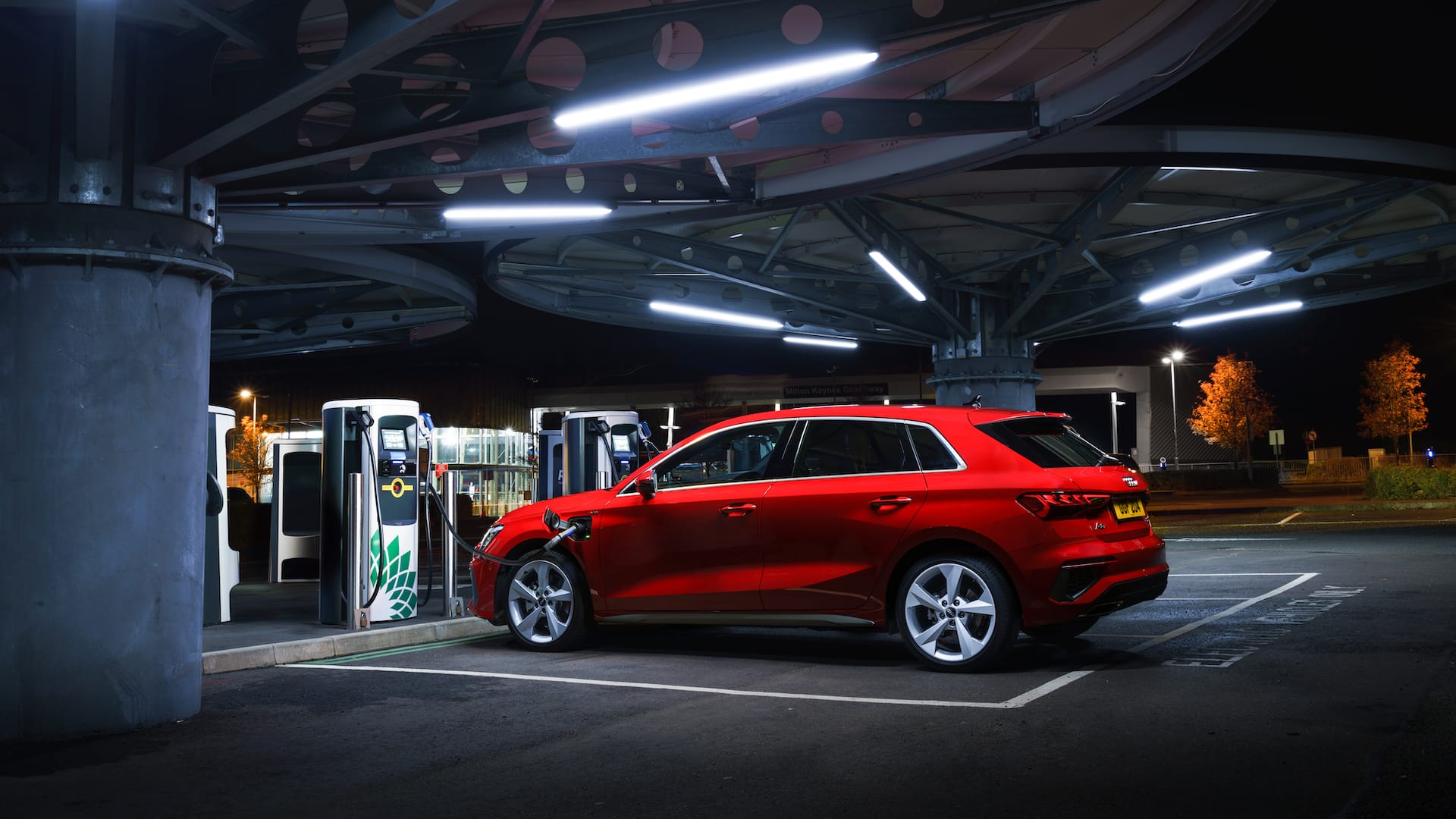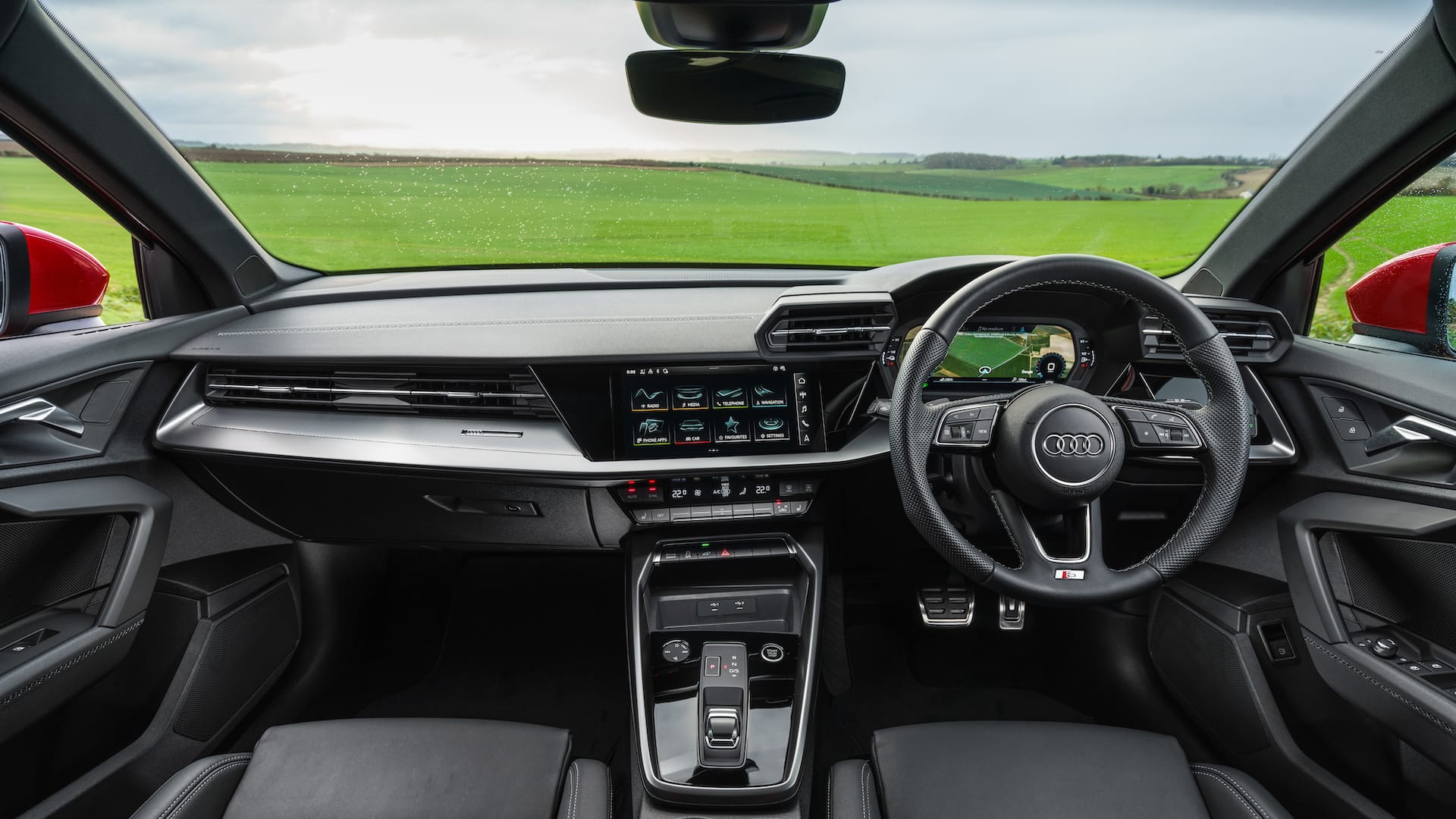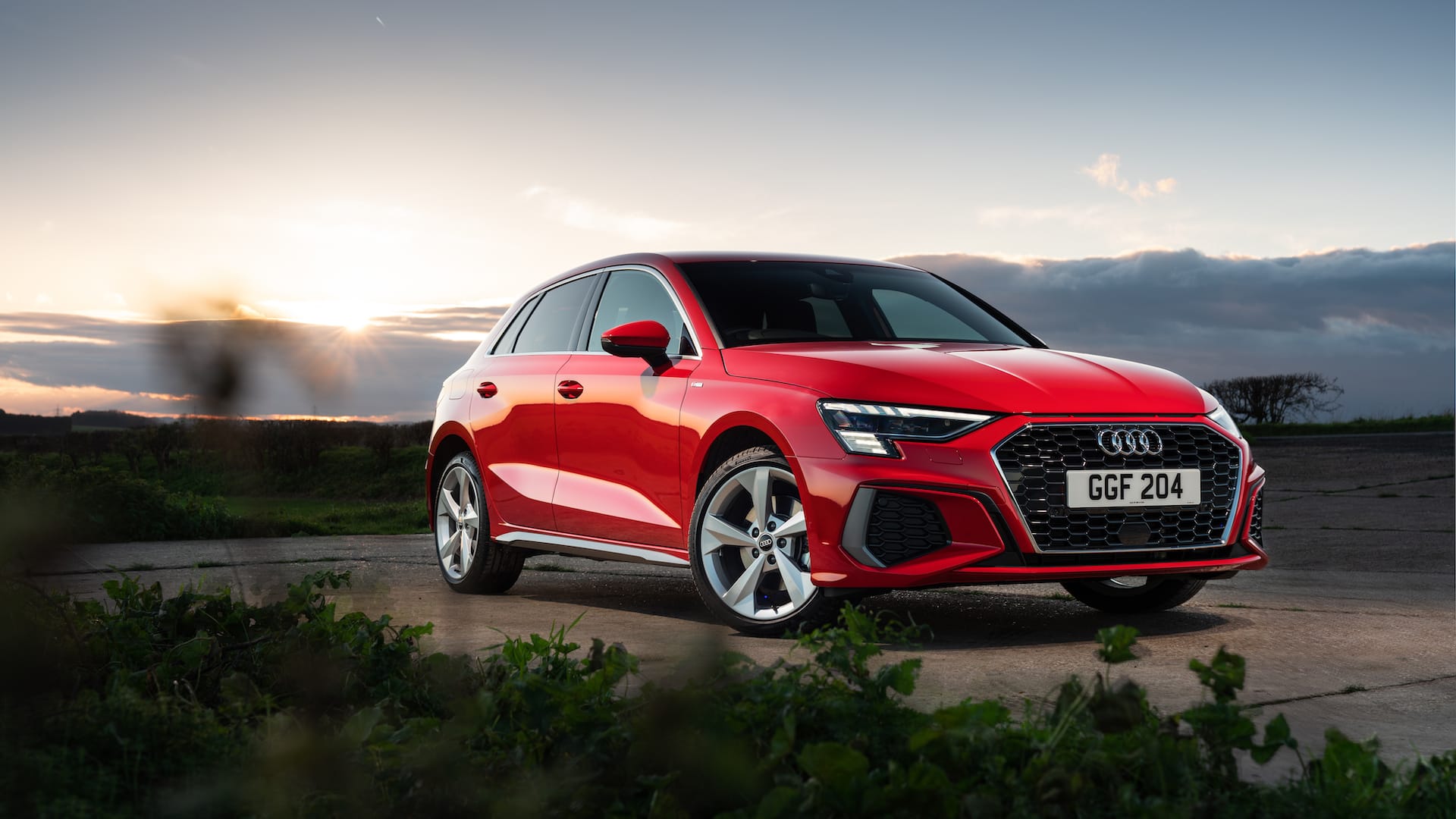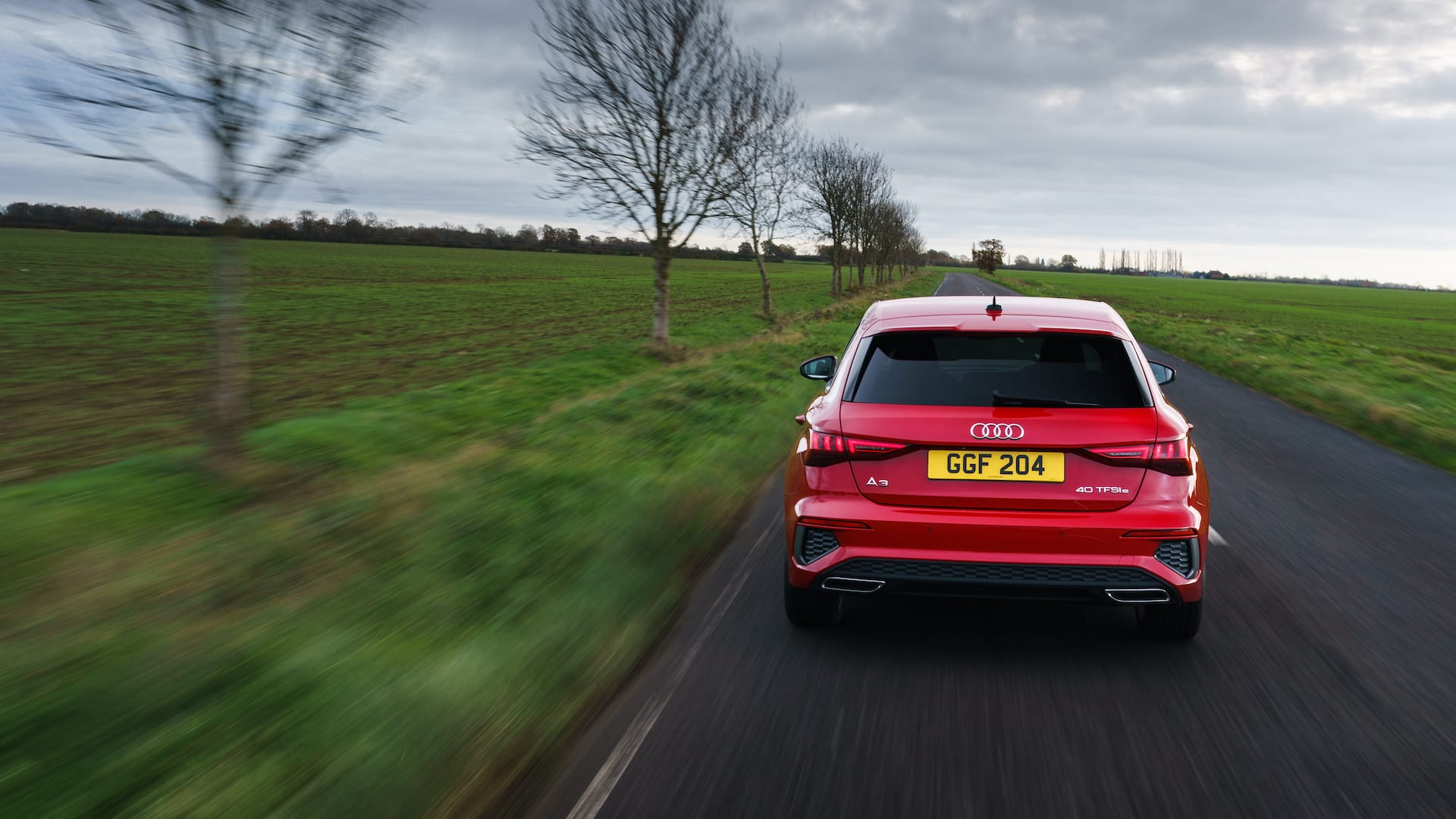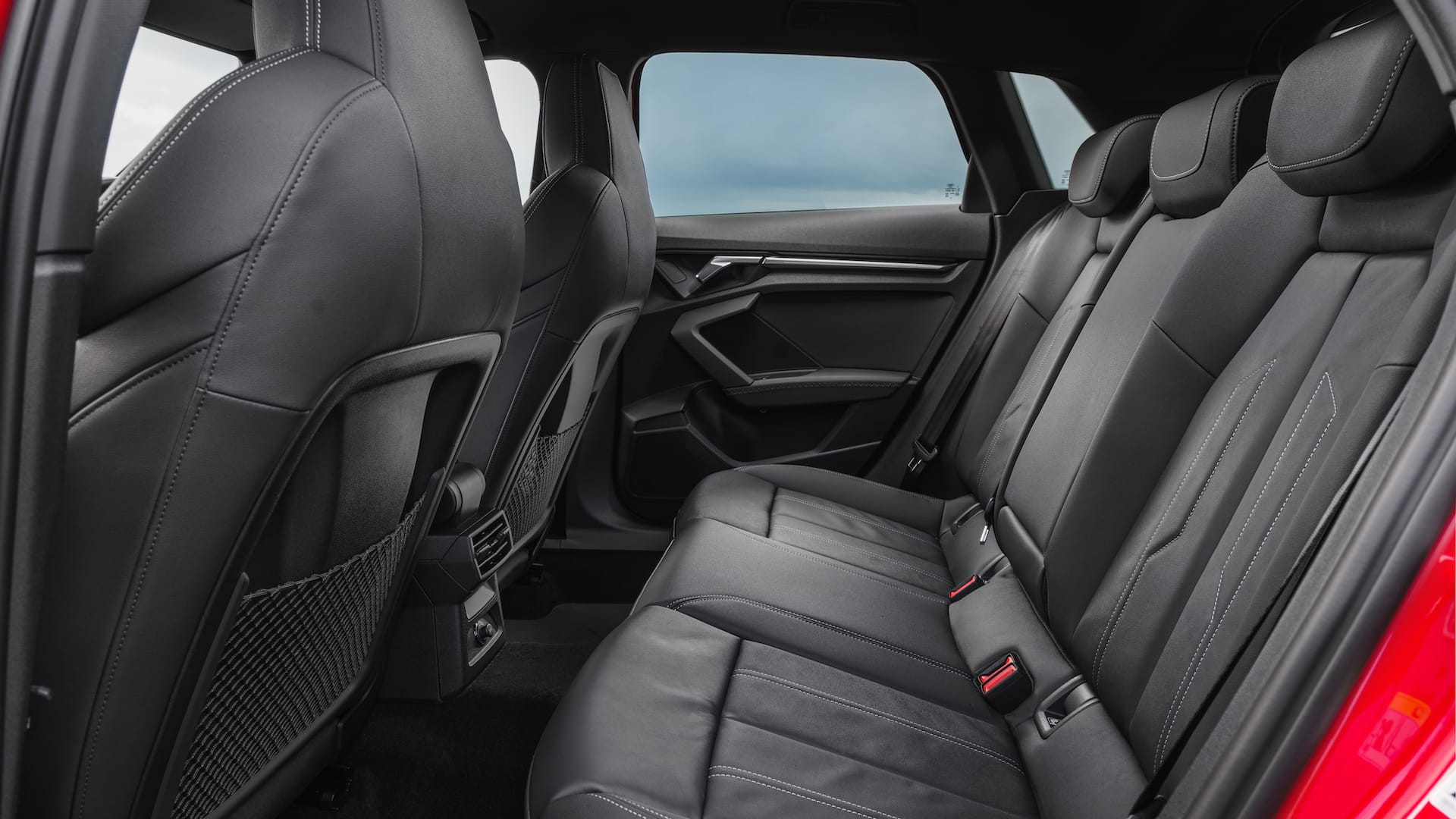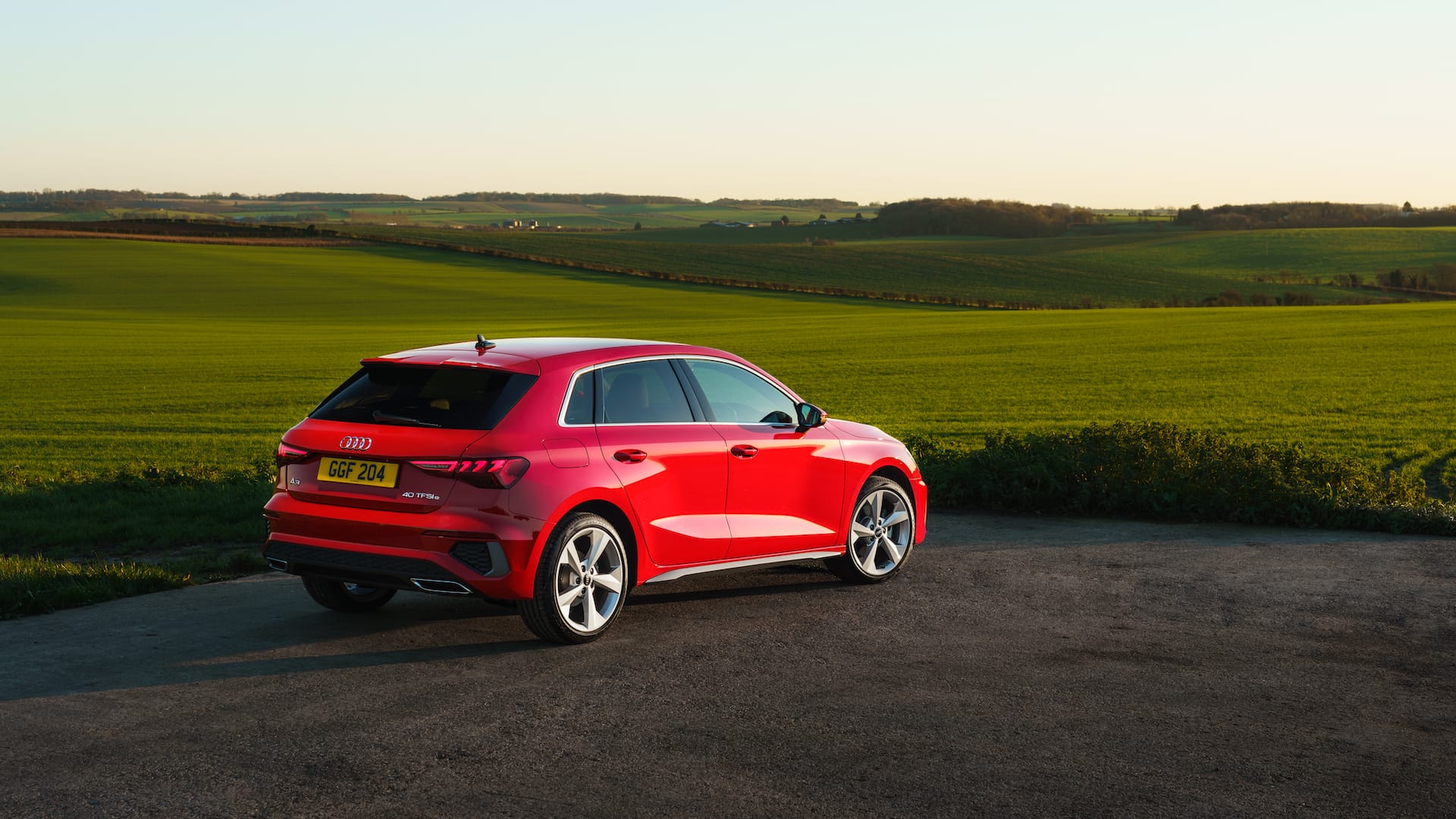The Audi A3 has become a core part of the German brand’s range. First launched in 1996, it arguably created the premium family hatchback market. Combining practicality with an upmarket image, it has since become ubiquitous on UK roads.
It makes this fourth-generation model hugely important to the company. So, how does it shape up?
Against the previous three generations, the latest A3 is more dramatic to look at. Designer Juan Carlos Huerta Martinez says the Lamborghini Countach provided inspiration when styling the new car.
Audi has discontinued the three-door hatchback version of the A3, leaving just the five-door Sportback and four-door saloon available.
E-Tron is gone
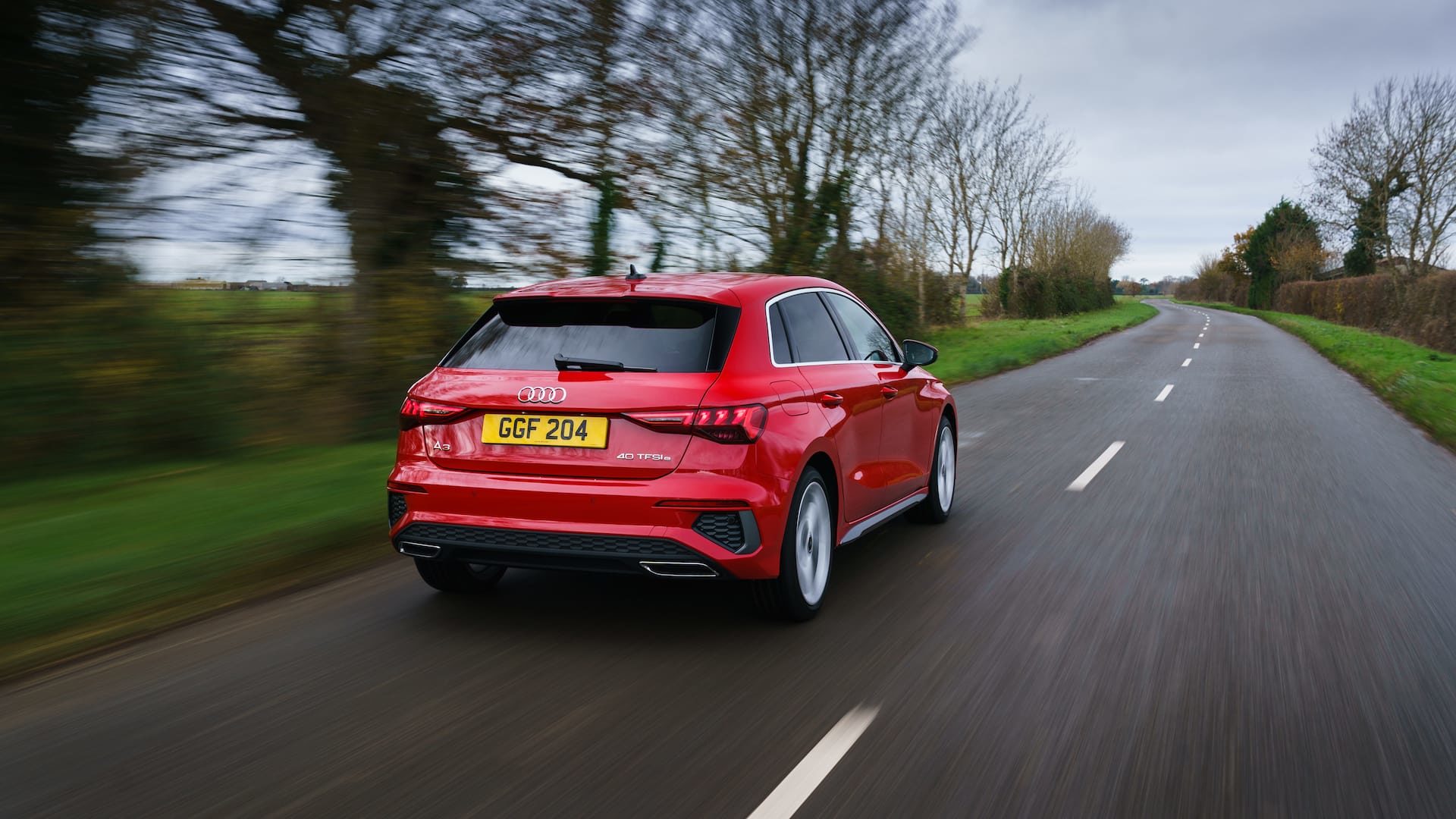
New to the range are a pair of plug-in hybrid (PHEV) models. Audi has ditched the ‘E-tron’ name for its PHEVs, reserving it solely for pure electric cars. It means the plug-in hybrid A3 wears ‘TFSI e’ branding, offered in 40 and 45 flavours.
Both cars make use of a 150hp 1.4-litre turbocharged petrol engine coupled to an electric motor – the same hybrid powertrain used widely throughout the Volkswagen Group.
Choosing the 40 TFSI e, tested here, means a total output of 204hp, with the 45 version employing bigger batteries for 245hp.
The 40 TFSI e is likely to be the most popular A3 PHEV. Company car drivers in particular will be drawn to it, with CO2 emissions from 25g/km in official WLTP tests making for low Benefit-in-Kind tax.
Smooth operator
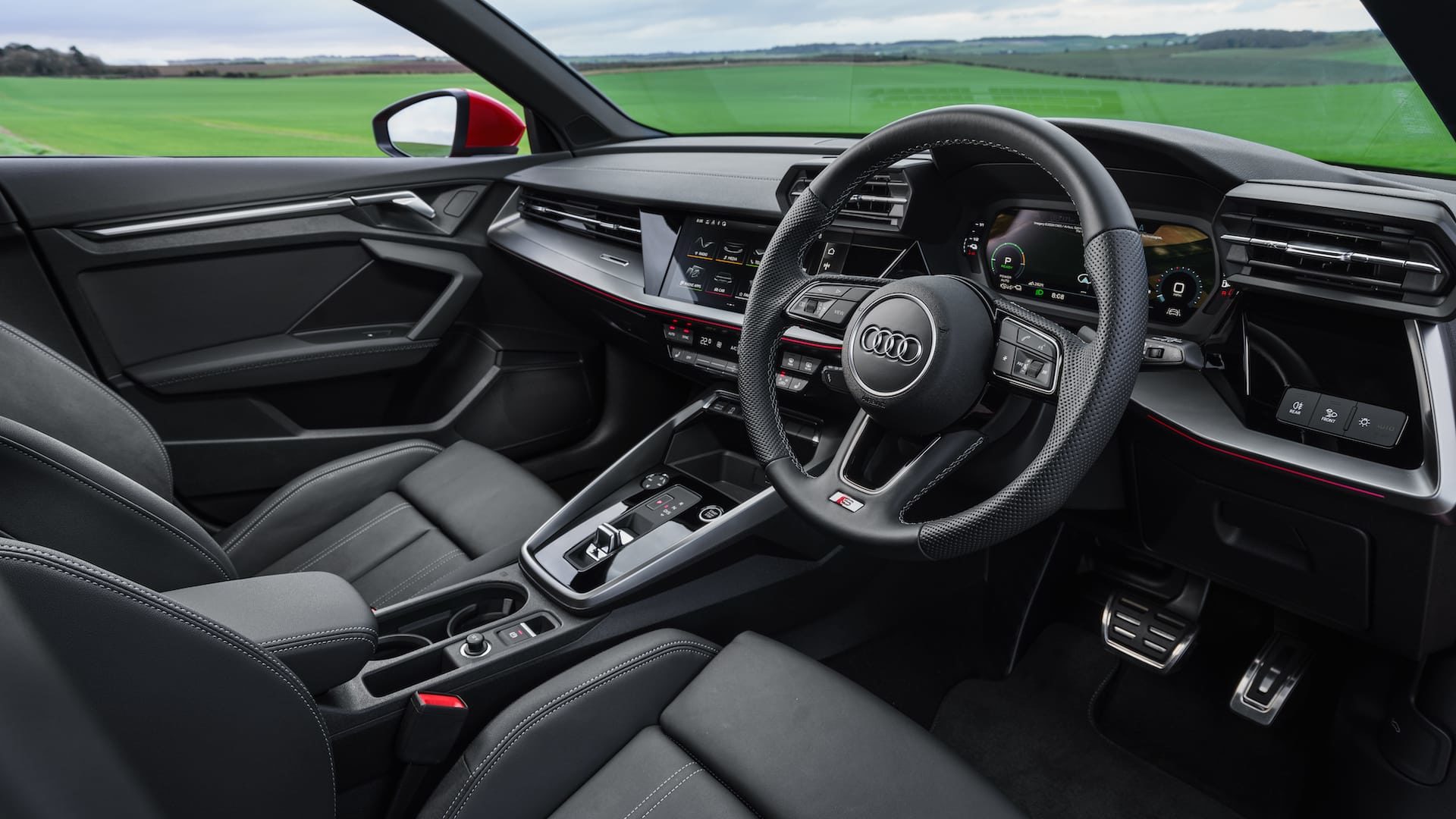
A six-speed S tronic dual-clutch transmission handles the power in the 40 TFSI e, sending it solely to the front wheels. It shifts rapidly, although the complexity of the A3’s hybrid drivetrain means it is typically best left to its own devices.
Doing so allows the A3 40 TFSI e to power smoothly to 62mph in 7.6 seconds. Performance seems effortless in Hybrid mode, with initial acceleration in all-electric EV mode very effective, too.
Battery Charge and Battery Hold modes allow the A3 to add or retain electric charge respectively. Regenerative braking also helps top up the battery on the road.
Charging the 13kWh battery is via a port mounted behind the passenger-side wheelarch. The A3 40 TFSI e does not support rapid charging, meaning a four-hour wait to fully replenish the battery, whether you use a domestic wallbox or a public charging point.
Handle with flair
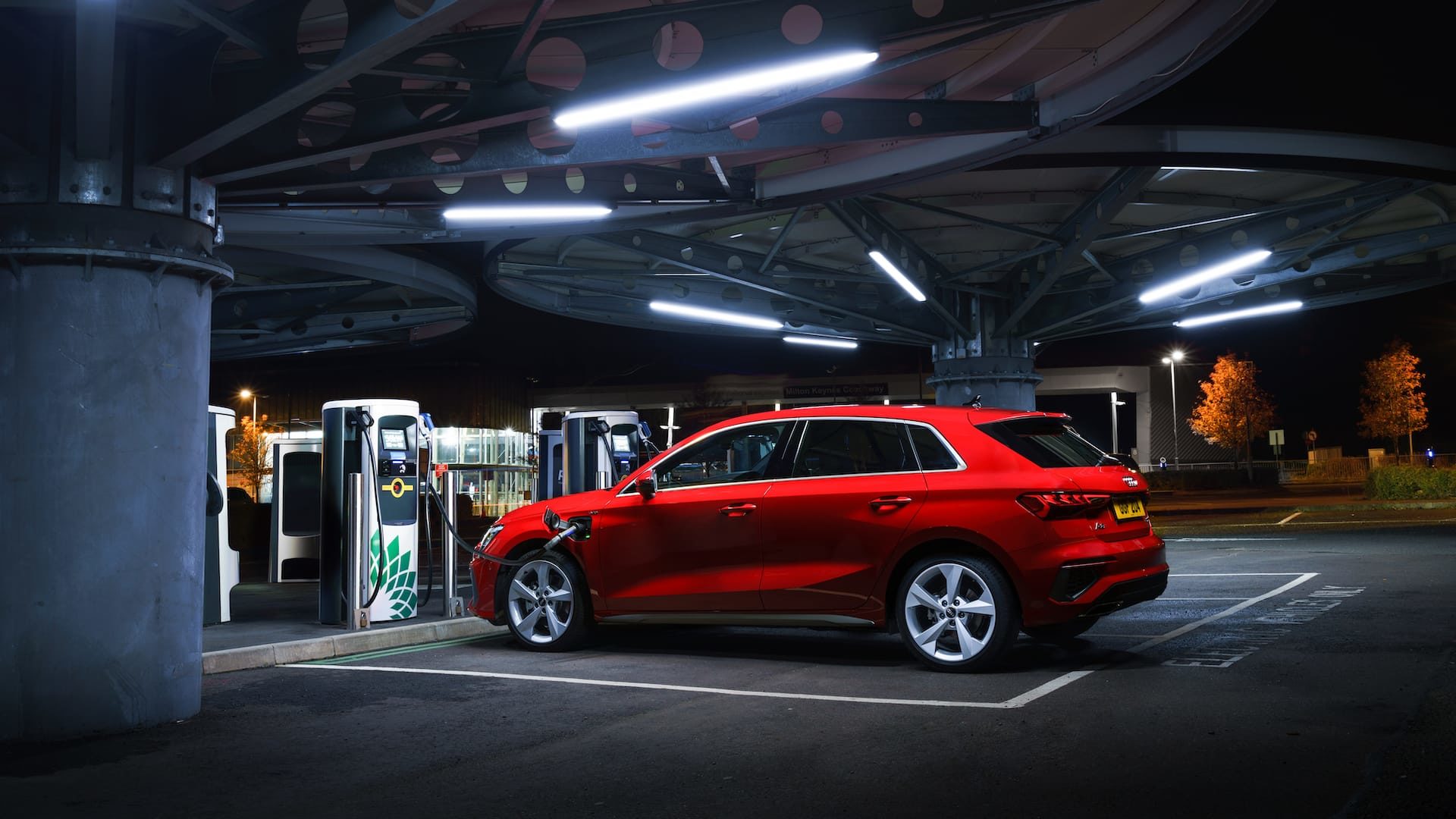
Used solely in electric mode, the A3 40 TFSI e can cover up to 40.4 miles. This is on Sport and S Line cars fitted with the smaller 17-inch wheels. Opting for an S Line with fancier 18-inch alloys drops EV range down to 37.28 miles.
It is hardly a dramatic change, but one that illustrates the need for sacrifices in return for eco piety.
Choosing the 17-inch alloys brings an additional benefit however: a smoother ride. Cars with 18-inch rims can feel unsettled on imperfect tarmac.
This latest A3 also handles far more engagingly than its predecessors. Indeed, it drives with more flair than the rival BMW 1 Series or Mercedes-Benz A-Class.
A solid argument
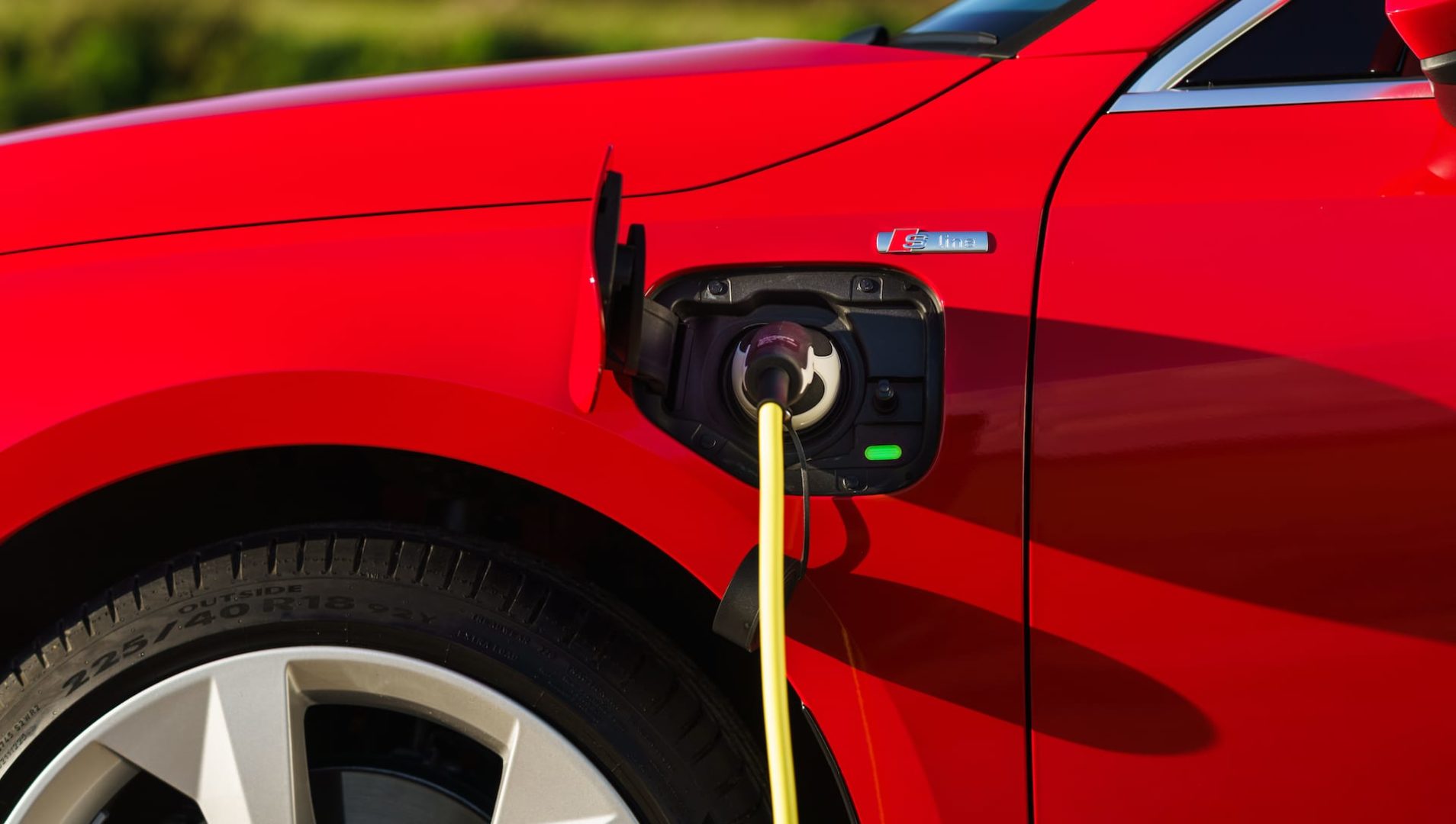
Despite the dramatic styling of the A3’s interior, it is still practical. Some of the plastics can feel a little cheap, though. A large 10.1-inch touchscreen controls multimedia functions, but Audi has (thankfully) retained some physical buttons.
Standard specification is strong, with LED headlights, dual-zone climate control, leather seats and a digital dashboard all included. S Line models add sports seats and privacy glass, with the options list offering numerous ways to make your A3 very expensive.
Although more spacious than before, opting for the hybrid A3 does mean a 100-litre reduction in boot capacity compared to the regular model. It drops total luggage space to 280 litres, which could be a compromise too far for families.
It makes for the only real drawback in the comprehensive package offered by the A3 40 TFSI e. Strong performance, bold styling and low emissions make it otherwise hard to argue against.
ALSO READ:
Audi A8 flagship gets new look and more tech for 2022
Audi S8: living with the classic ‘Ronin’ super saloon
26 of the best German cars ever
Rivals: BMW 1 Series, Mercedes-Benz A-Class, Volkswagen Golf
